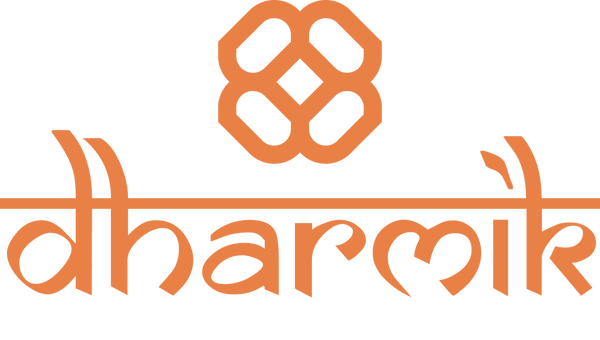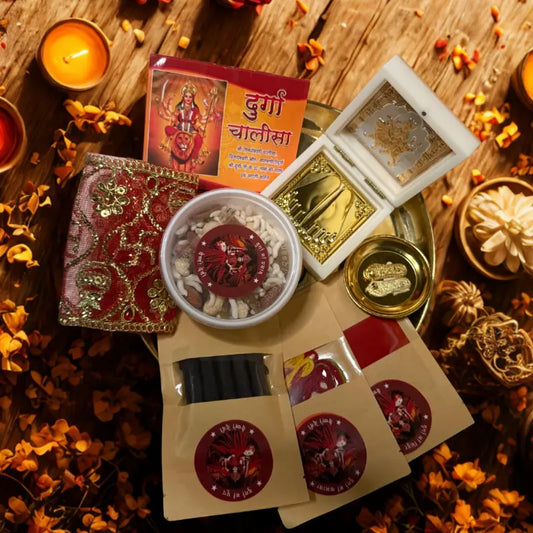
The Story Behind Navratri Prasad and Its Significance in 2025
Share
Navratri is more than a festival—it’s nine days of devotion, fasting, and celebrating the divine power of Maa Durga. While music, dance, and rituals light up the festival, Navratri Prasad remains at the heart of every prayer.
Prasad during Navratri is not just food; it is Maa Durga’s blessing, a sacred offering that binds families and communities together. In 2025, the Navratri story of good defeating evil becomes even more relevant, reminding us that sharing prasadam is sharing love, protection, and divine energy.

The Navratri Story and the Origin of Prasad
The Navratri story originates from the epic battle between Maa Durga and Mahishasura, a demon who symbolized arrogance and evil. For nine nights, Maa Durga fought fiercely, and on the tenth day—Vijayadashami—she achieved victory, restoring peace and dharma.
Every day of Navratri honors a different form of the Goddess, and Navratri Prasad becomes the bridge between devotee and deity. Offering food to the goddess is symbolic of surrender, while consuming it afterward reflects receiving her blessings.
This is why prasad during Navratri isn’t merely ritualistic—it is spiritual nourishment that aligns the devotee with the essence of the Goddess’s power.
What Makes Navratri Prasad Special in 2025
As times change, traditions grow deeper in meaning. In 2025, devotees view Navratri Prasad as a way to balance modern life with spiritual grounding. Whether at home or in a temple, offering prasad connects people to a centuries-old tradition of devotion.
Common Navratri Prasad includes:
- Fruits & Dry Fruits: simple offerings representing purity.
- Kheer & Halwa: sweet symbols of abundance and joy.
- Sabudana Khichdi & Pooris: sattvic meals for fasting devotees.
- Coconut & Panchamrit: carrying purity and divine blessings.
Every offering has meaning, yet all share a single purpose—to honor Maa Durga and carry forward the lessons of the Navratri story.
Through Dharmik, devotees can receive authentic Navratri Prasad directly from temples, preserving both purity and tradition.
Rituals and Symbolism of Navratri Prasad
Rituals around Navratri Prasad are rich in symbolism. Each morning and evening, devotees prepare sattvic food, offer it to Maa Durga, and then share it among family and neighbors.
The deeper meanings include
- Equality: Prasad unites everyone, regardless of caste or status.
- Blessings: Eating prasad is believed to invite protection and peace.
- Purity: Only sattvic foods are prepared, reflecting devotion and simplicity.
Just as Maa Durga removed evil in the Navratri story, prasad is believed to cleanse the mind and soul, leaving space for positive energy.

The Human Side of Prasadam Devotion
The joy of Navratri Prasad is felt most in shared experiences. Families gather after prayers, enjoying kheer or fruits together. Children look forward to the sweets, while elders remind them of Maa Durga’s story and the values of courage and faith.
In many homes, a portion of prasad is set aside for relatives or neighbors, spreading blessings beyond the family. Such traditions show that prasad is not only a divine gift but also a reminder of community, compassion, and togetherness.
Dharmik—Your Companion for Navratri Prasad 2025
Not every devotee can visit temples during Navratri, but devotion should never be limited by distance. Dharmik ensures that the sanctity of Navratri Prasad reaches your home, wherever you are.
With Dharmik, you can receive:
-
Authentic Navratri Prasad from renowned temples.
-
Rudraksha & Tulsi Malas for japa and meditation.
-
Mandir Essentials to complete your daily puja rituals.
-
Other Temple Prasad, such as Puri Mahaprasad and Dwarka Prasad.
Here’s a neat set of 5 FAQs on Navratri Prasad in a devotional yet easy-to-read style:

FAQs on Navratri Prasad
Q1. What is Navratri Prasad?
Navratri Prasad is the blessed food or offering made to Goddess Durga during the nine days of Navratri and later shared among devotees as a token of divine grace.
Q2. Why is Prasad important during Navratri?
It is believed that whatever is offered to the goddess becomes infused with her blessings. Consuming Prasad during Navratri is considered a way to receive strength, protection, and positivity.
Q3. What food items are usually offered as Navratri Prasad?
Typical offerings include fruits, dry fruits, kheer, halwa, puri, and specially prepared vrat-friendly foods like sabudana khichdi or singhara laddus.
Q4. Can Navratri Prasad be shared with everyone?
Yes. Devotees not only eat the Prasad themselves but also share it with family, friends, and neighbors, as distributing Prasad spreads divine blessings.
Q5. How should Navratri Prasad be consumed?
It should be eaten with devotion and gratitude, often after offering prayers or aarti to Goddess Durga. Many devotees also break their fast with the Prasad.
Navratri Prasad carries the soul of devotion. It is not just food—it is a sacred connection with Maa Durga, rooted in the Navratri story of victory, courage, and protection.
In 2025, as families celebrate the festival across India, prasad will continue to serve as a symbol of faith, equality, and divine blessings. With Dharmik bringing temple prasadam to every devotee’s home, no prayer goes unanswered and no heart remains untouched by the grace of Maa Durga.
👉 Order Your Navratri Prasad here




